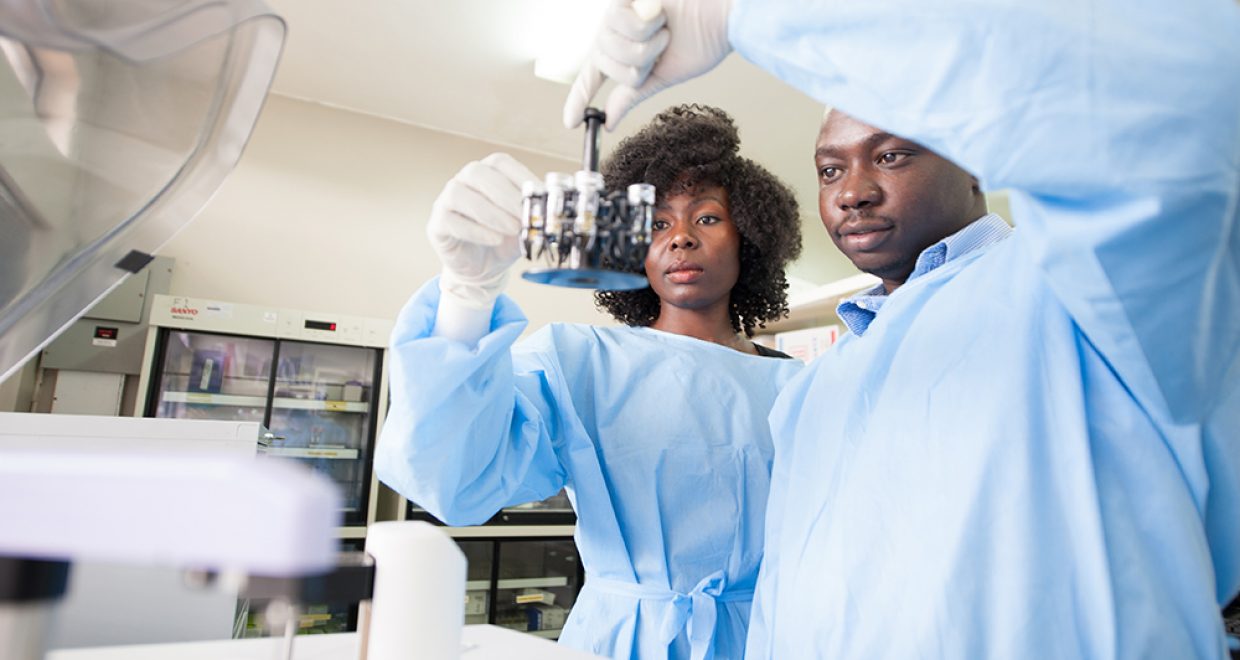A vaccine is needed for a definitive and durable end to HIV/AIDS
This post was written by Jill Gilmour and originally posted on the Global Health, Epidemiology and Genomics blog – read more at: http://gheg-journal.co.uk/blog/
The AIDS pandemic continues to be a major global health issue. Despite significantly accelerated implementation of effective prevention and treatment tools to address HIV and AIDS, in 2015 alone, HIV infected more than two million people including 150,000 children under 15 years of age and killed more than one million people.
Sub-Saharan Africa remains the most severely affected region, with 25 million adults and children living with HIV. (1) These numbers are difficult to put in context, or comprehend. Given the scope of the epidemic, new biomedical tools to prevent HIV are essential, and a sense of urgency needs to be renewed. The most promising of these is a safe and effective HIV vaccine that provides durable protection, thus providing a realistic and cost-effective means of reversing the AIDS pandemic on a population level.
Incredibly, treatment rates have doubled in the past five years, but annual new infections with HIV have not decreased substantially. Access and adherence to available prevention and treatment remain challenging for many. Recent modeling results show that even in the face of the massively expanded use of current treatment and prevention options, hundreds of thousands of people in low- and middle-income countries will be newly infected with HIV and die from AIDS for decades to come. An effective, well-adopted vaccine, however, could sustainably prevent the majority of new annual HIV infections, thereby averting millions of infections and saving countless lives.
Given that HIV is one of the most challenging viruses the world has ever faced, current research has achieved remarkable results in recent years. There is now significant positive momentum in HIV vaccine research, and important scientific advances are being made to inform the design and development of novel approaches. Promising new vaccine candidates are progressing toward clinical evaluation, and some may enter late-stage clinical efficacy trials in populations most at risk of HIV infection within the next few years. AIDS vaccines research is also providing new information on therapeutic interventions that use the immune system to modify the course of AIDS and transmission of HIV. Such discoveries will inform novel treatment approaches that combine immunotherapy with anti-retroviral (ARV) treatment in ways that may improve HIV infection host control and contribute to explorations of modalities to pursue HIV cures. New vaccine concepts are getting ready for clinical testing, with new insights and tools that also advance vaccine development for diseases like tuberculosis, influenza and Ebola, and all with increasing involvement and ownership of research efforts in Africa.
We must continue to find ways to finance HIV vaccine development; there is currently far too little investment from governments and industry alike. In addition, we need to continue to re-invent how we develop new vaccines, so that the process is faster, more effective and cheaper. We need new models of collaboration between public and private sectors. And, we need to enhance collaboration with those countries most affected by HIV and those most vulnerable– making health and surveillance systems more resilient to detect and fight all pathogens, including HIV, and supporting high-quality research in these countries.
References
- Joint United Nations Programme on HIV and AIDS (UNAIDS). November 2016. http://www.unaids.org/sites/default/files/media_asset/UNAIDS_FactSheet_en.pdf




